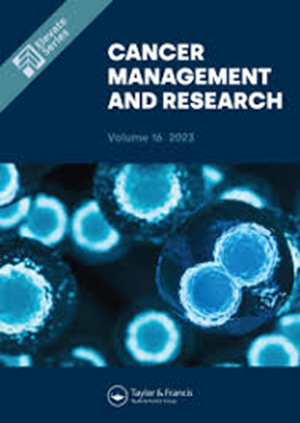Machine Learning-Based Predictive Model for Mortality in Female Breast Cancer Patients Considering Lifestyle Factors
IF 2.5
4区 医学
Q3 ONCOLOGY
引用次数: 0
Abstract
Purpose: To construct a free and accurate breast cancer mortality prediction tool by incorporating lifestyle factors, aiming to assist healthcare professionals in making informed decisions.Patients and Methods: In this retrospective study, we utilized a ten-year follow-up dataset of female breast cancer patients from a major Chinese hospital and included 1,390 female breast cancer patients with a 7% (96) mortality rate. We employed six machine learning algorithms (ridge regression, k-nearest neighbors, neural network, random forest, support vector machine, and extreme gradient boosting) to construct a mortality prediction model for breast cancer.
Results: This model incorporated significant lifestyle factors, such as postsurgery sexual activity, use of totally implantable venous access ports, and prosthetic breast wear, which were identified as independent protective factors. Meanwhile, ten-fold cross-validation demonstrated the superiority of the random forest model (average AUC = 0.918; 1-year AUC = 0.914, 2-year AUC = 0.867, 3-year AUC = 0.883). External validation further supported the model’s robustness (average AUC = 0.782; 1-year AUC = 0.809, 2-year AUC = 0.785, 3-year AUC = 0.893). Additionally, a free and user-friendly web tool was developed using the Shiny framework to facilitate easy access to the model.
Conclusion: Our breast cancer mortality prediction model is free and accurate, providing healthcare professionals with valuable information to support their clinical decisions and potentially promoting healthier lifestyles for breast cancer patients.
Keywords: breast cancer, machine learning, predict model, mortality, lifestyle, SHAP
考虑生活方式因素的基于机器学习的女性乳腺癌患者死亡率预测模型
目的:结合生活方式因素,构建一个免费、准确的乳腺癌死亡率预测工具,旨在帮助医护人员做出明智的决策:在这项回顾性研究中,我们使用了中国一家大型医院女性乳腺癌患者的十年随访数据集,共纳入 1,390 名女性乳腺癌患者,死亡率为 7%(96 人)。我们采用了六种机器学习算法(脊回归、k-近邻、神经网络、随机森林、支持向量机和极端梯度提升)来构建乳腺癌死亡率预测模型:结果:该模型纳入了重要的生活方式因素,如术后性活动、使用全植入式静脉通路端口和义乳佩戴,这些因素被确定为独立的保护因素。同时,十倍交叉验证证明了随机森林模型的优越性(平均 AUC = 0.918;1 年 AUC = 0.914,2 年 AUC = 0.867,3 年 AUC = 0.883)。外部验证进一步证明了模型的稳健性(平均 AUC = 0.782;1 年 AUC = 0.809,2 年 AUC = 0.785,3 年 AUC = 0.893)。此外,我们还利用 Shiny 框架开发了一个免费且用户友好的网络工具,以方便用户访问该模型:我们的乳腺癌死亡率预测模型免费且准确,可为医护人员提供有价值的信息以支持他们的临床决策,并有可能促进乳腺癌患者养成更健康的生活方式。 关键词:乳腺癌;机器学习;预测模型;死亡率;生活方式;SHAP
本文章由计算机程序翻译,如有差异,请以英文原文为准。
求助全文
约1分钟内获得全文
求助全文
来源期刊

Cancer Management and Research
Medicine-Oncology
CiteScore
7.40
自引率
0.00%
发文量
448
审稿时长
16 weeks
期刊介绍:
Cancer Management and Research is an international, peer reviewed, open access journal focusing on cancer research and the optimal use of preventative and integrated treatment interventions to achieve improved outcomes, enhanced survival, and quality of life for cancer patients. Specific topics covered in the journal include:
◦Epidemiology, detection and screening
◦Cellular research and biomarkers
◦Identification of biotargets and agents with novel mechanisms of action
◦Optimal clinical use of existing anticancer agents, including combination therapies
◦Radiation and surgery
◦Palliative care
◦Patient adherence, quality of life, satisfaction
The journal welcomes submitted papers covering original research, basic science, clinical & epidemiological studies, reviews & evaluations, guidelines, expert opinion and commentary, and case series that shed novel insights on a disease or disease subtype.
 求助内容:
求助内容: 应助结果提醒方式:
应助结果提醒方式:


